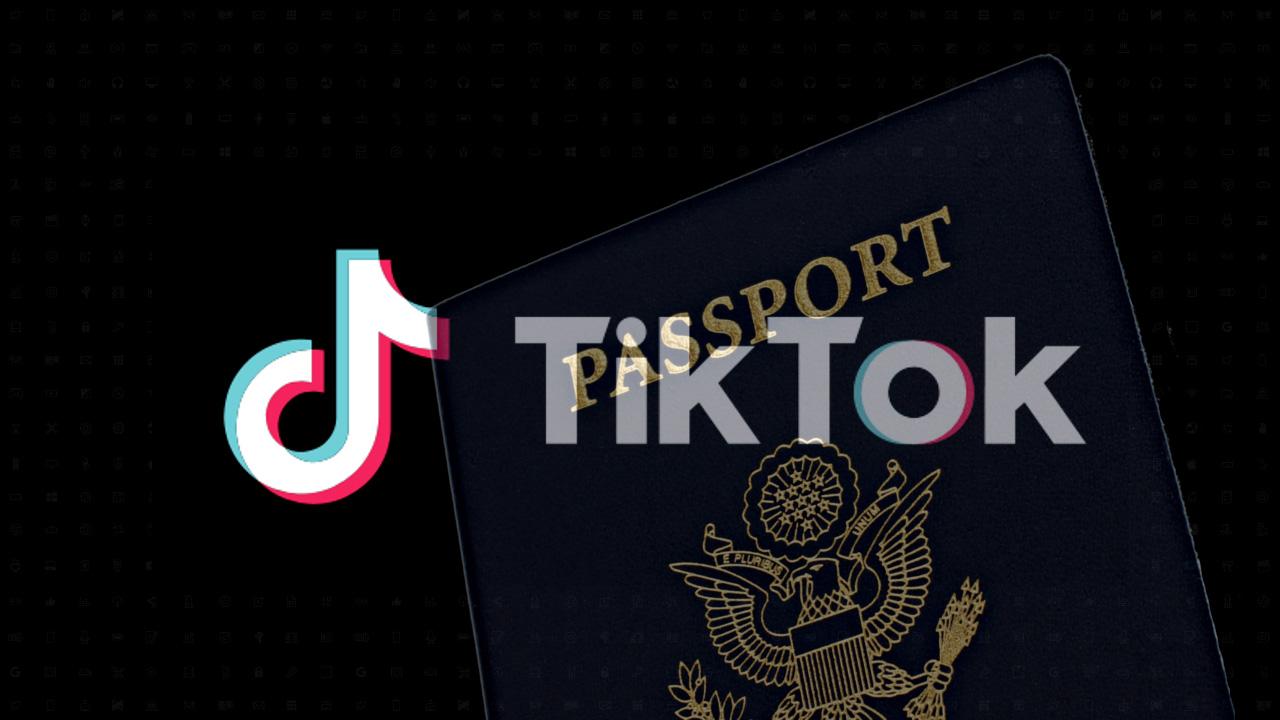Teach students how to use artificial intelligence responsibly
With AI becoming a powerful tool in education, it’s not just about knowing how to use it, but when and why to use it in ethical ways. It’s incredible to see students using artificial intelligence to brainstorm creative project ideas, get instant feedback on their writing, or even generate unique artwork—but how do we ensure … Continued The post Teach students how to use artificial intelligence responsibly appeared first on Truth For Teachers.

With AI becoming a powerful tool in education, it’s not just about knowing how to use it, but when and why to use it in ethical ways.
It’s incredible to see students using artificial intelligence to brainstorm creative project ideas, get instant feedback on their writing, or even generate unique artwork—but how do we ensure they’re using it responsibly?
As educators, we have a unique opportunity to guide students in harnessing AI’s potential while teaching them to think critically about its limitations and impacts. In this article, I’ll share practical strategies to help you teach students how to use AI responsibly, ensuring they become thoughtful, tech-savvy learners in an AI-driven world.
Teaching Students AI Literacy

Before students can use artificial intelligence responsibly, it’s crucial they understand how it operates. Many students interact with AI daily—whether it’s through personalized playlists, virtual assistants, or autocorrect on their devices—but they often don’t realize it, or grasp the mechanics behind it. To teach students responsible AI use, we need to first demystify the technology.
1. Start with Simple Definitions
Explain that AI, at its core, is technology designed to learn from data and make decisions or predictions based on that information. Compare AI to a very fast and complex version of human learning: just like people learn from experiences, AI learns from data.
You can use accessible analogies to explain this. For instance, when a student uses a streaming service like Spotify or Netflix, AI pays attention to the types of songs or shows they prefer and recommends similar content. This is much like a friend who knows their preferences and suggests what they might like next. AI’s power lies in its ability to recognize patterns and continually refine its predictions.
2. Discuss How AI Gathers Data
Students need to understand that AI isn’t a magical decision-maker. It’s powered by vast amounts of data collected from different sources. This includes everything from what users click on to the questions they ask a virtual assistant like Siri. Explain how AI gathers and processes this data to “learn” and improve its responses.
For example, when students use search engines or social media, AI is constantly collecting information about their interactions to improve the accuracy of the results they see. This can be a fun opportunity to let students brainstorm how their favorite apps might be using data.
3. Explain Machine Learning
Machine learning, a core part of AI, allows AI systems to improve over time without explicit programming. Introduce this concept by explaining that machine learning enables AI to get better with practice, much like how students improve their skills the more they study a subject. The more data AI has, the better it becomes at recognizing patterns and making decisions.
Use examples like how a smartphone’s autocorrect function learns from a student’s typing habits. Over time, it adjusts to suggest the correct words they tend to use. The phone isn’t programmed for every possible word; instead, it learns what the user typically writes and adjusts accordingly.
4. Cover the Limitations of AI
It’s important that students understand that AI isn’t perfect. It can make mistakes because it’s only as good as the data it receives. If the data is biased, incomplete, or inaccurate, the AI’s outputs will reflect those flaws. You can encourage students to think critically by asking questions like, “What happens if an AI system is trained on biased data? How might that affect its recommendations?”
Ways That AI is Changing the World

Once students understand how AI works, the next step is to show them the real-world impact AI has across different industries. Teaching this can inspire students to think about the broader implications of AI and how it will affect their future careers and daily lives.
1. AI in Healthcare
AI is transforming healthcare by improving diagnostics, treatments, and even predicting health outcomes. For example, AI systems can analyze medical images more quickly and accurately than a human doctor, helping to detect diseases like cancer earlier. Chatbots and virtual health assistants can provide patients with basic health advice, and wearable devices use AI to track heart rates, steps, and sleep patterns, giving real-time health feedback.
This is a good moment to ask students questions like, “Would you trust an AI doctor? Why or why not?” Such discussions can help them consider the ethical implications of relying on AI for critical decisions.
2. AI in Retail and Shopping
AI is everywhere in retail, from personalized shopping recommendations to virtual assistants like Alexa. When students shop online, AI is constantly analyzing their behavior—what they click, what they add to their cart, and what they leave behind. AI-driven chatbots answer customer questions and even help with purchasing decisions.
Students can explore how AI impacts their shopping experiences: “How does AI make online shopping easier? How might it influence your decisions without you even realizing it?”
3. AI in Transportation
Self-driving cars are one of the most recognizable examples of how AI is changing transportation. Autonomous vehicles use AI to process real-time data from cameras, sensors, and GPS to navigate roads, avoid obstacles, and make split-second decisions. AI is also improving public transportation systems by optimizing routes and reducing traffic congestion.
Ask students to imagine what their future might look like if self-driving cars become the norm. Would they feel safe in one? What are the potential benefits and risks?
4. AI in Education
In the classroom, AI is helping both students and teachers by personalizing learning experiences. AI-powered platforms like DreamBox or Khan Academy adapt their lessons based on how well students are doing. For example, if a student is struggling with a specific math concept, AI will offer more targeted practice problems. AI also helps teachers by automating grading, identifying student needs through data, and suggesting resources.
Teachers can have students reflect on the benefits and challenges of AI in education: “How might AI help you learn better? What are the risks of relying too much on AI in school?”
5. AI in the Workplace
AI is reshaping jobs in nearly every field. In manufacturing, robots powered by AI are working alongside humans to assemble products faster and with fewer errors. In offices, AI automates repetitive tasks like scheduling, data entry, and customer service. As AI becomes more advanced, it’s essential for students to consider how it will impact their career options.
Engage students with questions like, “What jobs might be replaced by AI? What new jobs might AI create?” This helps students think critically about the future of work and the skills they will need to thrive in an AI-driven world.
6. AI in Everyday Life
Students may not realize it, but AI is all around them—in their smartphones, smart home devices, and even social media filters. AI helps predict the weather, provide driving directions, and even powers the voice recognition features of their virtual assistants like Siri or Google Assistant. By exploring these everyday uses, students can see just how much AI has integrated into their routines.
A fun way to engage students is by asking, “What AI tools do you use every day without even thinking about it? How do they make life easier or more fun?”
AI’s Possibilities
As educators, we want to inspire curiosity and excitement about the future, but we also need to encourage healthy skepticism and critical thinking. I like to talk with students first about the possibilities, and then the limitations:
- Efficiency & Time-Saving: AI can handle repetitive or time-consuming tasks that humans might find tedious. Think about autocorrect, voice-activated virtual assistants, or even AI-powered chatbots that answer common customer questions. For students, this might mean using AI tools to help brainstorm ideas for a writing assignment or improve the clarity of their grammar.
- Creativity & Innovation: AI can also help foster creativity. For example, AI tools like DALL·E and Canva are helping students and professionals create stunning visual designs with minimal effort. AI-generated music and art are pushing the boundaries of human creativity by suggesting ideas that people may not have thought of on their own. Ask your students to imagine: How might AI help them get creative in their school projects or even hobbies outside of school?
- Problem-Solving: AI excels at analyzing large amounts of data and finding patterns. In fields like healthcare, AI is already helping to diagnose diseases earlier and more accurately than doctors alone. It’s used in finance to detect fraudulent transactions, and in education, it can personalize learning paths to fit the needs of individual students.
AI’s Limitations

- Bias in Data: AI can only be as good as the data it’s trained on. If the data is biased or incomplete, the AI’s decisions will reflect those biases. This can lead to unfair outcomes—like facial recognition systems being less accurate for certain races or genders—or search results that reinforce harmful stereotypes. It’s critical to have conversations with students about the ethical use of AI and how bias in data can impact the world around them.
- Lack of Human Intuition: AI is great at analyzing data, but it lacks human intuition, emotion, and judgment. It can’t always understand the nuances of human behavior or relationships. For example, an AI system might be able to tell you which book you might like based on your reading history, but it can’t have a conversation with you about why you loved that book. In fields like teaching, counseling, or customer service, there will always be a need for human connection.
- Dependence on Algorithms: While AI can be a helpful tool, we need to be careful not to become overly dependent on it. Students should understand that not all tasks should be automated. For instance, using AI to write a complete essay might seem tempting, but it can prevent students from developing their own critical thinking and writing skills. Encourage students to consider: “What tasks should I do on my own, and when is it okay to ask for help from AI?”
- Privacy Concerns: AI relies heavily on personal data, and this raises concerns about privacy and data security. Students should understand the importance of being cautious about the information they share online, especially when using AI-powered apps or tools that collect personal data.
Do’s and Don’ts for Responsible AI Use

By establishing some key do’s and don’ts, you can help students understand how to make ethical choices when using AI in school and in their daily lives. These guidelines will give them a framework for evaluating when and how to use AI tools, both for academic work and personal projects.
Do’s:
- Do use AI to brainstorm and generate ideas.
AI can be a great tool for jump-starting creativity. Whether it’s coming up with essay topics, brainstorming projects, or getting feedback on ideas, students should feel encouraged to use AI as a resource for inspiration and support. - Do use AI to help with research and fact-checking.
AI-powered search engines and tools like language models can help students find information faster. Encourage students to use these tools to locate relevant sources, check facts, and gain a deeper understanding of complex topics. - Do give credit when AI assists in your work.
Students should be transparent about when and how they use AI. If an AI tool helped them generate an idea or solve a problem, it’s important to acknowledge that in their work. Teaching students to credit AI sources reinforces honesty and integrity. - Do use AI to practice and improve skills.
Whether it’s learning a new language or improving writing skills, AI can provide personalized learning experiences. Encourage students to use AI for skill-building exercises, like grammar checks or language practice apps, to supplement their learning. - Do think critically about the information AI provides.
Just because AI provides information doesn’t mean it’s always accurate. Teach students to critically evaluate the outputs of AI, cross-check facts with reliable sources, and consider the potential for bias in AI-generated content.
Don’ts:
- Don’t use AI to complete assignments for you.
It’s important that students understand AI should be used as a tool to assist learning, not as a shortcut. Submitting AI-generated content as their own work deprives them of the opportunity to develop their own skills and understanding. - Don’t rely solely on AI for decision-making.
AI can offer suggestions, but it can’t replace human judgment. Students should understand that AI is a tool to assist with tasks, not a substitute for their own thinking. For important decisions, human intuition and reasoning are still essential. - Don’t ignore privacy concerns when using AI.
Many AI tools collect data to function effectively. Students should be cautious about the personal information they share with AI platforms, understanding the importance of protecting their privacy and data. - Don’t use AI in ways that harm others or spread misinformation.
AI can be used to create misleading information, like deepfakes or fake news. Students should understand the ethical implications of misusing AI for manipulation or harm and avoid participating in such activities. - Don’t let AI replace human effort in creative or personal tasks.
While AI can assist in many ways, some tasks require a personal touch or creative input that only humans can provide. Encourage students to maintain ownership of their personal and creative projects, using AI to enhance their work, not replace it.
How to Determine When AI is Okay to Use for Assignments

One of the most important lessons for students is learning how to discern when it’s appropriate to use AI for schoolwork. To help them with this, we can guide students in referring to a simple continuum that shows varying levels of AI use. This chart provides a structured approach, so students can make informed decisions about how and when to integrate AI into their assignments responsibly.
Here’s a breakdown of the continuum:
- 0: No AI Use Allowed
Some tasks should rely entirely on the student’s own thinking and skills. These might include personal reflections, creative writing, or assessments where the goal is to evaluate the student’s understanding. For these assignments, students should work independently without using AI assistance. - 1: AI-Assisted
In this stage, AI can be used as a helper to assist with brainstorming or editing, but the final product should be the student’s own. For example, a student might use AI to generate ideas or get feedback on grammar, but they should still write the essay or complete the assignment on their own. AI tools should be supplemental, not the main creator of the content. - 2: AI-Enhanced
This level allows for AI to be used for specific tasks within an assignment, like organizing research, generating examples, or providing detailed feedback. However, students must be transparent about their AI use and cite it properly as a source. In these cases, AI adds value to the project but does not replace the student’s own work or analysis. - 3: AI-Empowered
For more open-ended or exploratory assignments, full use of AI may be allowed. Students might use AI for tasks like creating visuals, generating full reports, or conducting comprehensive research. In these instances, students need to acknowledge the AI’s contributions and ensure their work is still meaningful and accurate, even if AI played a significant role in shaping it.
While it’s important for you as the teacher to spell out where an assignment or task falls on the continuum, it’s also good to teach students how to self-reflect:
- “Is this assignment about showing my personal understanding and skills, or is it more about creativity and problem-solving where AI can help?”
- “Can AI assist me in improving my ideas, or will it take over and do most of the work?”
- “Am I using AI to help me learn, or am I relying on it too much to complete the assignment for me?”
- “Am I giving credit where it’s due by acknowledging the AI’s role in my work?”
Encouraging students to use this continuum will empower them to be more thoughtful about when and how they use AI for academic tasks. It emphasizes balance—showing students that while AI can be a helpful tool, it’s important to use it in a way that enhances their learning rather than replaces it.

Want a done-for-you solution?
Teach students how to use artificial intelligence responsibly and ethically with a no-prep 3 lesson mini unit!
What’s included:
- 40 professionally-designed slides that are fully editable, and guide you through the lesson implementation, including interactive partner, group, and whole class practice activities
- 5 student reflection pages which can be printed or used digitally
- A short teacher’s guide with instructions
- An editable AI use continuum to convey to students when they can and can’t use AI for assignments in your class
Each lesson is designed to take only 20 minutes of class time, but can be extended if you’d like to encourage additional discussion.
Students will learn:
- How AI works
- Ways that AI is changing the world
- AI’s possibilities and limitations
- Ethical issues to consider with AI
- Do’s and don’ts for responsible AI use
- How to determine when AI is okay to use for assignments
Watch the video preview here to see every slide and activity in the unit.
The post Teach students how to use artificial intelligence responsibly appeared first on Truth For Teachers.




































/cdn.vox-cdn.com/uploads/chorus_asset/file/24435316/STK150_Bing_AI_Chatbot_02.jpg)










![United Passenger’s Upgrade Mishap Sparks Seat Loss—Here’s the Critical Step to Avoid It [Roundup]](https://viewfromthewing.com/wp-content/uploads/2018/09/20170607_112204.jpg?#)



























